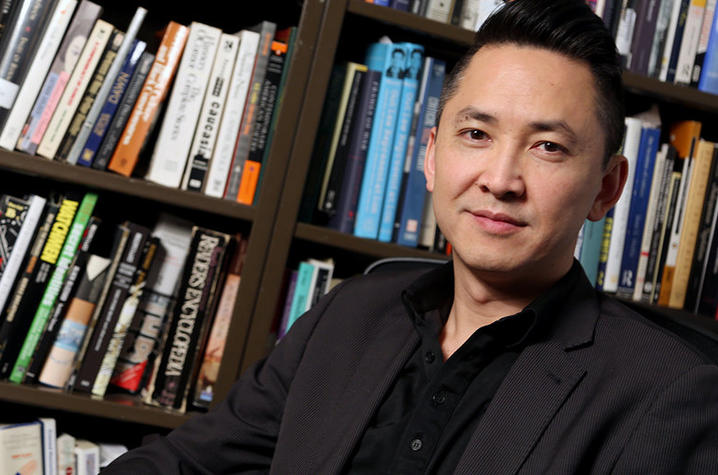Action! A&S Creates Certificate in International Film Studies
By Nate Harling
This year, the University of Kentucky College of Arts and Sciences offers an undergraduate certificate in international film studies.
By Nate Harling
This year, the University of Kentucky College of Arts and Sciences offers an undergraduate certificate in international film studies.
By Whitney Hale

Viet Thanh Nguyen. Photo by Matt Meindl.
UK EES alumnus Tim Elam (M.S. Geology, '81) describes how his geological training at UK prepared him for a successful career in industry and for his current role as a seasonal interpretative park ranger at Grand Canyon National Park.
By Nate Harling
University of Kentucky linguistics professors Rusty Barrett and Andrew Hippisley have been recognized as Fellows of the Linguistic Society of America (LSA).
The LSA is the nation’s largest organization dedicated to the advancement of linguistics, the scientific study of language. Since 2006, it has named a new class of fellows every year to recognize, in their words, “distinguished contributions to the discipline.”
Summary of this year’s program and events by Dr. Phil Harling, Dr. Julie Bursten, and Dr. Tiffany Barnes (“Year Of” Faculty Committee Chairs)
For more information visit: commonfuture.as.uky.edu
Patronymic Salvage: Paintings, Photographs, and Daughters in Search of their Fathers
Sheila Jelen, Comparative Literature and Jewish Studies at University of Maryland.
Abstract: Through an analysis of two image books featuring East European Jewish life in the years before the Holocaust with an eye toward "salvage poetics," or the poetics that arise out of post-Holocaust popular ethnographic constructions of pre-Holocaust images, in this lecture we consider how ethnic image books and family albums have become interchangeable in post-Holocaust America. Mayer Kirshenblatt's They Called Me Mayer July (2007) and Alter Kacyzne's Poyln (1999) were both edited by the daughters of the artists whose work is featured therein. Even while identifying their fathers in and around the images in the two books, each daughter acknowledges the inevitable anonymity that pertains to subjects captured just before a cataclysmic event and observed by strangers after it; not every person in every image can be named, as they can in a family album. But within the genre of post-Holocaust image books used to focalize the American-Jewish sense of community and history, these albums occupy a familiar, ethnic, place.